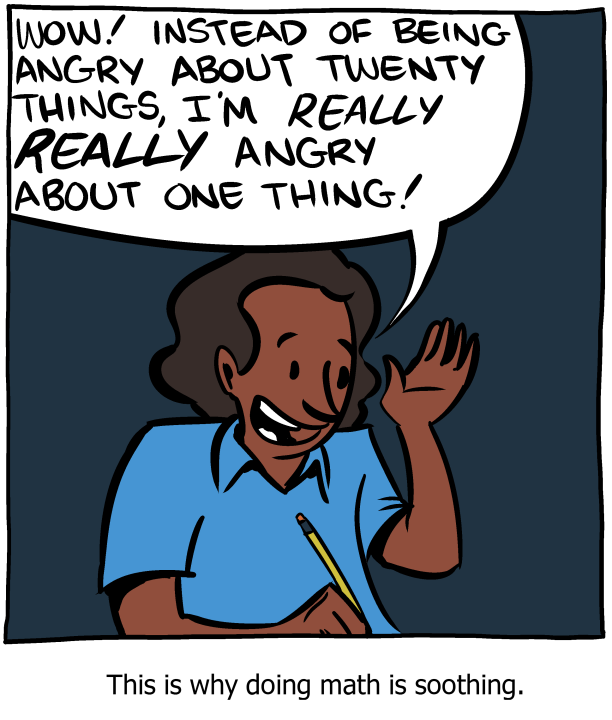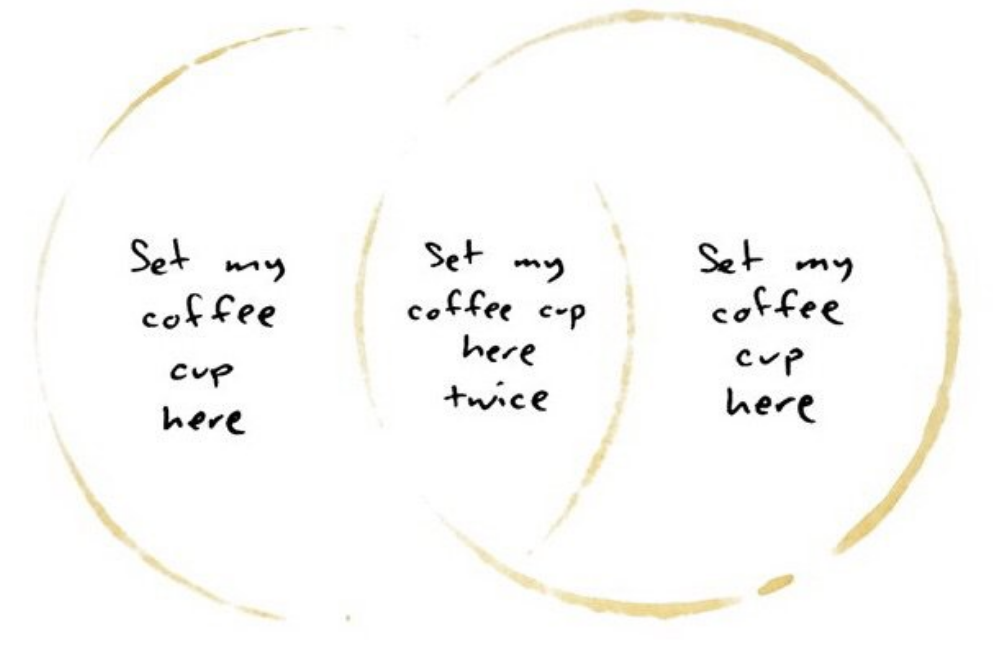
Introduction to the assignment
This assignment all concerns the section “8. Problems For Solution” in Chapter I, on pages 24–25.
When reading a math book with exercises, it is often a good idea to at least attempt all the problems. This will help gauge your understanding. If you can solve all the problems, that will increase your confidence as you move forward.
However, it may not be feasible to do all problems. Some books include some very difficult problems, each of which you could think about for a long time. Or there might be too many simple problems, of a repetitive nature, for it to be worthwhile to do them all. In either of those cases, you will need to make a judgment call, about which problems, and about how many problems, are necessary to build your skills and confidence.
For this chapter, none of the exercises are super hard. Note that problems are not always listed in order of difficulty, so you shouldn’t feel you have to do them in order; in this case, #4, 5, and 6 are harder than the others, so I would leave them for last.
The problems are a little repetitive, but I don’t think overly so. Each one gives slightly different practice. However, it would be a little tedious, and maybe not so worthwhile, to write all the answers in detail.
IF YOU ARE FINDING THAT THIS IS GOING QUICKLY, and you have time, I would recommend doing all the problems, at least mentally. I will indicate below how many problems I want you to write out in full. If you are finding it easy, I would suggest picking the hardest problems to write out.
IF YOU ARE FINDING THAT THIS IS GOING SLOWLY, and you are running low on time, I have made suggestions about which problems or parts to skip. I would also suggest that you maybe pick some of the easier problems to write out, to be sure you’re understanding.
Either way, feel free to skip around. You don’t have to do everything strictly in order.
Preamble Assignment #1 was intended to set you up for this chapter and assignment. If you haven’t done it already, it might be helpful. On the other hand, everything we need about sets is covered in Chapter 1; if you understood everything in the Chapter, you do not need to go back and complete the Preamble Assignment.
NOTE: There are answers at the back of the book! (Page 483.) They don’t give much detail, but they can be a helpful check to see if you are doing things correctly.
Please upload your writeup of the assignment to the Google Drive folder. I would like you to upload whatever you’ve got at the initial due date, and then upload additions and corrections as needed.

Assignment
Everything below refers to the problems in the section “8. Problems For Solution” in Chapter I, on pages 24–25.
Problem 1: I would like you to write out your solution to this problem in full.
There are two ways to do this problem: you can list all elements of the sample space, and list all possible ways for each thing to happen (i.e. all points for each event), and count. Or, you can reason through counting the ways they can happen (e.g. “there are three choices for the first number if it is odd, then four choices for the next, so twelve ways in total”, etc.).
If you’re feeling shaky, I suggest listing everything first. Then try the counting argument, and check your answers against what you got by listing everything. If you feel confident, you can skip the list, and jump right to the counting argument (and check your answers against the author’s).
Either way, please write out your reasoning for this problem. (It doesn’t have to be overly detailed; just enough that I can follow your reasoning. Something like “three choices for the first number if it is odd, times four choices for the next”, that kind of thing.)
Problem 2: I’d like you to write out your solution for this problem in full.
I’d like you to do this two ways. First, I’d like you to list all the points of the events $S_1$, $S_2$, $S_1S_2$, and $S_1\cup S_2$. (You can use the numbering from Table 1 on page 9.) Then, for formula (7.4), find the value of each term in the formula (by counting), and check that the left side does in fact equal the right side.
For the second way, I’d like you to reason through how many points there should be in $S_1$, $S_2$, and $S_1S_2$. That should give you the probabilities of those events. Then, use formula (7.4) to find $P(S_1\cup S_2)$. This is often how formula (7.4) is used in practice.
Problem 3: If you’re feeling short on time, you can skip problem 3. You can always come back to it later. If you are feeling confident, I recommend doing this problem, since it introduces a slightly different idea.
As before, there are two ways: if you are feeling a bit unsure, you can just list all elements of each event. If you are feeling confident, give a counting argument instead.
If you do this problem, you can write your answer more briefly if you want.
Problems 4, 5, 6: These are a bit harder. Skip them for now, and we’ll come back to them at the end.
Problem 7 and 8: Pick ONE part of either of these two problems to write out completely in words. If you want, you can do the rest mentally. (But if it is helpful to you, go ahead and write the others out in words too!).
Problem 9: I would like you to write this problem out fully.
Please do it two ways: first way, write out all the points of the events $A$, $B$, $AB$, $A\cup B$, and $AB’$. Then answer the question by counting.
Second way, if you are feeling confident, is to find these probabilities by reasoning. If that seems too hard, though, it is OK to skip the second way and do the first way only.
Problem 10 and 11: It is fine to do these problems mentally only, or you can just make a short statement for each. If you are short on time, you can skip these.
Problem 12: Pick one part, and write your reasoning for that part; for the other parts, just do the questions mentally and write down the answer (number of aces held by W). (Of course, if you find it helps to write them all out, please do so!)
Problem 13: Do all the parts mentally. Pick one part to write out your reasoning for.
Problem 14: A good way to reason through these problems is to draw a Venn diagram, and think about what region is represented by the left side of the equation, and what region is represented by the right side. If the two regions are the same, the equality is correct.
You can write out your reasoning by drawing a Venn diagram, numbering the regions, and referring to them by number. For example, here is my full answer to 14 (a):

“The event $A\cup B$ is 2, 3, 4, so $(A\cup B)’$ is just 1. On the other hand, $A’$ is 1 and 4, $B’$ is 1 and 2, so $A’B’$ is also just 1. Therefore $(A\cup B)’=A’B’$.”
Alternately, you can write out the reasoning in words if that makes more sense to you. For example, the answer above would be: “The event $(A\cup B)’$ means that it is not true that either A or B or both occurs. Therefore, it means that neither A nor B can occur. The event $A’B’$ means that event A does not occur, and event B does not occur. These are the same, so $(A\cup B)’=A’B’$.”
I find the Venn diagram easier, but it’s up to you! (Incidentally, for those of you who took Logic and Proofs: I am NOT looking for a formal proof here (though you are welcome to do one if you’d like practice!).)
If you are short on time, you can just do (f) and (g). Write out the reasoning.
If you are feeling confident, or if you want more practice, I would suggest doing the other parts as well. You can just do them mentally, or with minimal writing, if you like (while looking at a Venn diagram!).
Problem 15: This is fun, and good practice, if you have time. Using a Venn diagram (like in Problem 14) will make it easier. Alternately, you can try to do this “algebraically”, using the rules you developed in Problem 14. If you do it, feel free to write only minimal reasoning. If you are short on time, you can skip it.
Problem 16: This is good practice if you have time, but if not it can be safely skipped. I would suggest drawing a Venn diagram and numbering the regions like in Problem 14. Alternately, you can do at least some of the parts “algebraically” instead of using a diagram.
Problem 17: I would like everyone to do this one. Write out your reasoning for at least one of the trickier parts (like in Problem 14). You should at least write out your final answer for every part though.
Problems 18 and 19: These ones are valuable, but not essential. I recommend doing them if you can at all manage it. If you are struggling for time, though, you could skip them.
You can write out reasoning for Problem 18 like in Problem 14.
Problem 4: This problem is fun, interesting, and will be relevant to random walks later. It’s a bit tougher than the others though. I think everyone should try it, and we can discuss it in class if you’re stuck.
Unless I’m confused, I think there is a typo in the question: I think it should say that “To every possible outcome requiring $n$ tosses attribute probability $1/2^n$ ” (not $1/2^{n-1}$). Hopefully this should become clearer as you work through the question.
(Towards the end of this problem, you are going to need the following trick, which you may or may not have seen before. Suppose you want to find an infinite sum like $$S=\frac{1}{3}+\frac{1}{9}+\frac{1}{27}+\frac{1}{81}+\dotsb$$ (The technical name is a “geometric series”.) The trick is to multiply both sides of the equation by $\frac{1}{3}$: $$\frac{1}{3}S=\frac{1}{9}+\frac{1}{27}+\frac{1}{81}+\frac{1}{243}+\dotsb$$ Now, if you subtract the second equation from the first (i.e. subtract left sides, and subtract right sides), nearly everything cancels. You get $$S-\frac{1}{3}S=\frac{1}{3},$$ which you can solve for the unknown $S$ to find $S=\frac{1}{2}$. Therefore, the infinite series $S$ shown above adds to $1/2$.)
Problem 5: This one is fun and interesting. If you’re worn out at this point, you could skip it. But I really recommend trying it, it’s neat.
Problem 6: You can skip this one, unless you are feeling very ambitious.
